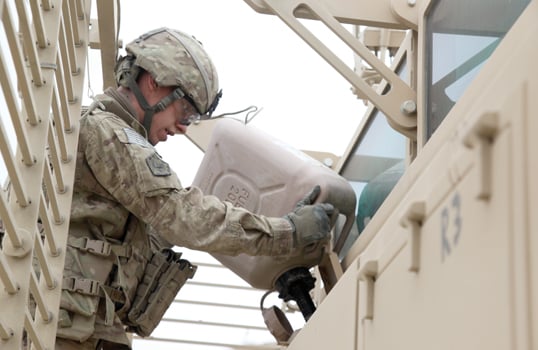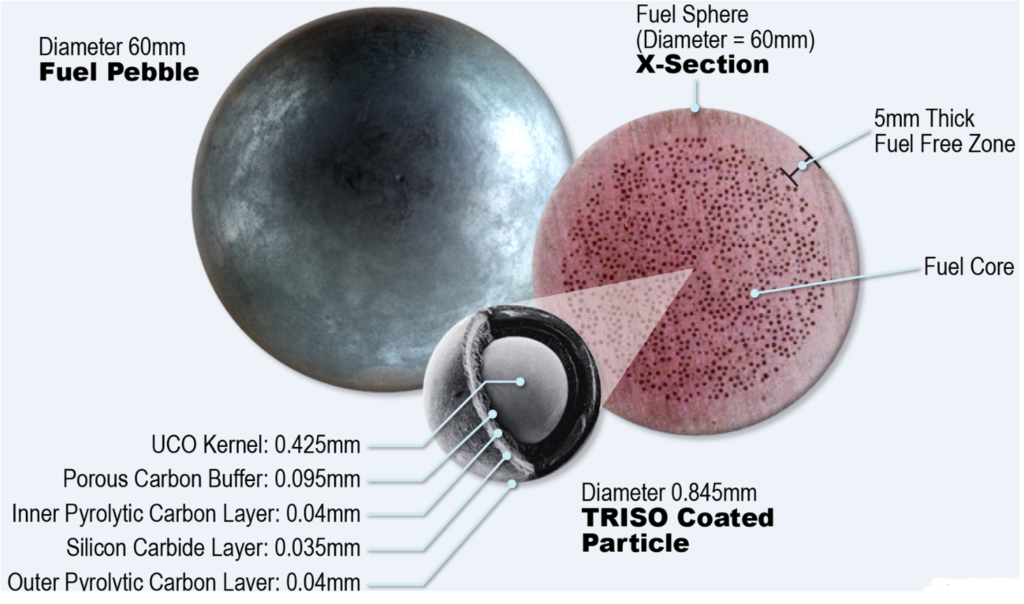
A soldier refuels his gas-guzzling MRAP armored truck in Afghanistan.
WASHINGTON: How do you recharge electric vehicles on the battlefield? Army Futures Command is looking for out-of-the-box ideas, so it’s awarded $600,000 in concept development grants to six companies that don’t normally do business with the military.
Refueling Army formations is a huge logistical problem – fuel convoys in Afghanistan and Iraq were often more dangerous than combat patrols – but moving from fossil fuel to electric vehicles raises logistical dilemmas of its own. There’s no infrastructure of charging stations (or gas pumps) on the battlefield, so you need a fast way to transfer power in difficult places.
That’s one of the central themes of the Army Applications Labs’ latest batch of half-a-dozen $100,000 grants, what it calls its Power Transfer Cohort. (Other “Cohorts” of unconventional contractors are studying automated ammunition resupply and reloading for future artillery). The Power Transfer project is in support of two Army Futures Command entities: the Next Generation Combat Vehicles (NGCV) team, which is developing a wide array of manned and robotic ground vehicles, and the Ground Vehicle Systems Center (GVSC), part of the command’s R&D arm, Combat Developments Command.
The six winners: electrical control specialist Coritech Services of Michigan; mechanical engineering firm Czero, Inc. of Colorado; modeling & simulation engineers PC Krause and Associates of Indiana; electric charging pioneers Tritium Technologies, LLC of California; and low-emissions aircraft company Wright Electric of New York. Each company has eight weeks to come up with a concept and brief Army experts.
One daunting question is where you get all the electrical power in the first place, especially for wattage-hungry futuristic weapons like anti-cruise-missile lasers. One solution is to burn the same fuel the Army burns today, only in high-efficiency generators, which turn gas into electricity much more efficiently than internal-combustion engines.

A sphere of TRISO fuel, with cross-section showing the individual fuel pellets inside.
Another idea, however, is to field mobile mini-reactors using nuclear power – an idea now being studied by the Pentagon’s Project Pele. Defense officials insist the compact reactors will be safe, because they won’t be deployed in war zones, and their fuel will be in the form of thousands of tiny, carefully sealed capsules that won’t burst even if hit by a missile. But a new study from UT-Austin’s Nuclear Proliferation Prevention Project says, not so fast.
“Reactor accidents that could radioactively contaminate thousands of nearby U.S.
troops are a serious risk because an adversary attack” – like the rockets that routinely hit bases in Iraq – “could disrupt air flow and thereby spur overheating of the fuel,” breaking open the protective pellets, the study argues. “Cost also could prove prohibitive,” it went on, arguing the military’s estimates were too optimistic.
Move over FARA: General Atomics pitching new Gray Eagle version for armed scout mission
General Atomics will also showcase its Mojave demonstrator for the first time during the Army Aviation Association of America conference in Denver, a company spokesman said.


























